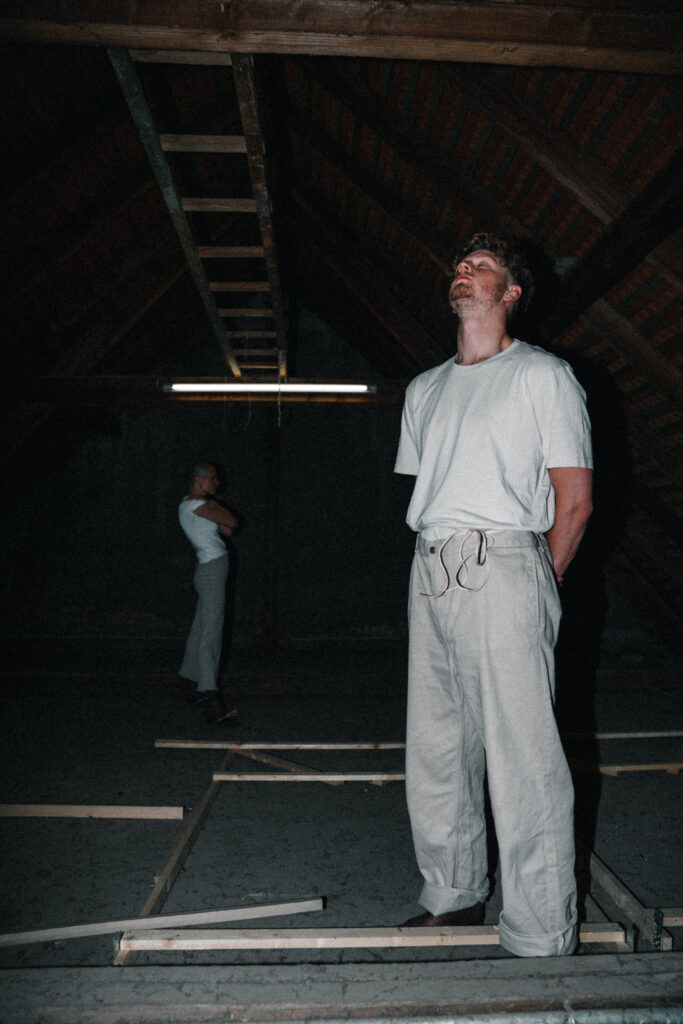WHAT IF ..?

DUST OF YOUR ARCHIVE OF STEREOTYPES!
Did you know that the numbers about street children in Germany vary from 9,000, to 22,000, to 37,000 young people who live as street children every year? Did you know that being a so called street child does not necessarily mean sleeping on the streets and being homeless? There are countless prejudices that these young people have to deal with day after day, not to mention the already complicated life situations.
In this issue we talk about what it means to be the youth of the streets and what might be concealed behind values.



A personal choice: The first collection of SHE ASKS works with the context of street children in Germany for several reasons. October 2019 to February 2020 I spend my internship semester at the fashion label People in Berlin. There, for the first time, I am consciously and physically coming out of my design bubble, where until now I decided who and what interests and information I surround myself with. I work there for half a year with Berlin street children and my personal image of many ideas I had learned changes radically and also my approach to the task as a designer shifts. I say goodbye to the idea that „in Germany no one has to sleep on the street“ and I am shocked again and again at how little information is in circulation about the daily circumstances, problems and issues of the young people.
„According to a definition in the lexicon of social work, „street children are underage young people who have largely and permanently turned their backs on socialization institutions provided for by society, who essentially orient themselves, usually together with other young people, to the public sphere as their only current place of socialization, and whose actions violate violate socially recognized normal conditions.“ Street children are children for whom the street is the center of life, where they spend most of the day – usually earning money, but also in gangs or cliques. They include children who have broken off all contact with their families and live permanently on the streets. Children who live on the streets with their equally homeless family are also considered street children. However, the transition is often fluid, for example in the case of children who only go home to sleep. What they all have in common is that they spend most of the day on the street. Most of them suffer from hunger, don‘t go to school and don‘t get any medical care.“
The figures on street children in Germany vary enormously depending on the source. Estimates range from 9,000, to 22.000 to 37.000 young people living as street children in Germany every year.
But why are exact figures so difficult to give?
There are no precise, government surveys in Germany to date. Exact figures are not available and cannot be provided because of the fluid transitions between „normal existence“ and „street career“ and because of the frequent change of young people.
C. from the socially sustainable fashion label People in Berlin describes how many young people report that they experience being excluded, not really being part of it. Young people are shown verbally as well as non-verbally that they are not part of society. However, young people cannot be lumped together because there is no such thing as „the“ street youth. There are many different forms and everyone struggles with prejudices, for example that they are lazy. Every young person who comes to People is struggling with different problems. Some are really on the street, they live there, they are drug addicts, and some are not obviously part of the target group. Cornelia Zoller describes in conversation how society does not want to deal with this situation at all, there is simply no overlap of communication. For example, people sit away from each other in the subway – but that comes from both sides, she says. In the same way, young people have prejudices against the social norm, such as „they don‘t really listen anyway“ or „they don‘t notice us at all,“ and so it becomes increasingly difficult to merge different groups. Many in Germany are not aware that this is so pronounced in this apparently so developed country. The term street children does not make the situation any easier either, as the vocabulary paints a picture in the mind that does not do justice to the situation.
In order to find the right contact persons and interview partners for the first collection, I turned directly to the team of People in Berlin. People is a part of Drugstop and belongs to Karuna e.V. Karuna runs 15 different facilities, distributed in Berlin with different approaches and contact points for various problems.
„KARUNA e.V. has been working with children and young people from difficult backgrounds for almost 30 years with the aim of catching young people who have become disconnected from social participation and enabling them to find a way back to social participation. This also includes underage unaccompanied refugee youth.“
One of these places is the Drugstop. It offers integrative help in childhood and adolescence, with drug and addictive behavior, life on the street and mental illness and is a counseling and day facility for drug-using adolescents and young adults aged 13 to 27. The service is aimed at young people at risk of addiction and drug addicts, their families, youth welfare offices, as well as anyone seeking advice and support.
The Drugstop is a day facility where young people can take advantage of various creative, sports and craft activities with little effort. In addition, the young people and those seeking help can take advantage of social counseling, addiction counseling or psychosocial counseling. Mondays to Fridays from 9:30-14:30 the doors are open to all and the offers can be accepted. All who feel either, or and, helpless or overwhelmed, use drugs or alcohol, are affected by homelessness, where the center of life is on the street, there is stress due to or in the residential facility or at home, psychological problems arise, there are difficulties with official documents, or youth assistance measures have ended or been discontinued, are welcome at the Drugstop. In the day structure there is a daily changing offer and excursions. The activities are planned together with the young people and there is also the possibility to work in the fashion label „People“. No special requirements have to be met in order to work there.
The Drugstop provides support for the everyday challenges and problems of the young people and together they look for ways and solutions. Importantly, the young people set the pace for implementation. In addition, the visitors have the opportunity to come or stay at fixed times for breakfast and lunch. There is a garden with various design possibilities and a music room/recording studio for the musical realization of own ideas is available. Daily showers are allowed during opening hours and a washing machine and dryer are available for free use. The special thing about the day care facility is that it is the only facility in Berlin that does not have a so-called clean requirement for the young people. This means drugs and alcohol may not be consumed in the facility and during the time of stay during the day, however, what is „done“ privately before or after the visit is not included. Thus, the really only two rules for staying at the Drugstop are „no violence“ and „no on-site consumption,“ making the day structure an extremely low-threshold comm structure. Everything is based on voluntariness and is completely unconditional, accepting and confidential. There are no commitments: „whoever is there today is there“. The Drugstop is an important safe space for the visitors. No one is judged, no consumption is condemned, if requested not even the full name has to be revealed and the duty of confidentiality is taken absolutely seriously and is not broken even in front of parents, unless there is danger to life.

7.5 billion people experienced today in a different way.


SO WHAT’S VALUEABLE?

PAUL

